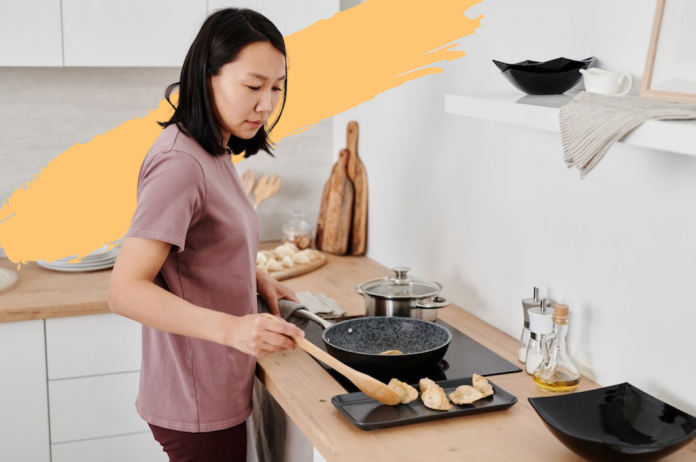Planning for the future is something that people have to do at every stage of life. Research published in 2021 revealed that 7 and a half million over-55s plan to modify their homes for later life care and wellbeing needs. For some, however, the idea of waiting until you’re 55 for your attention to turn towards later life and retirement feels somewhat fraught.
Indeed, that research suggested that 20% estimate future-proofers would need in excess of £10,000 to complete the appropriate home modifications to support themselves in later life. The average spend is upwards of £7,600 – representing a significant investment for over-55s and retirees. A case of closing the barn door after the horse has bolted, perhaps?
If you’re renovating your home already, it makes sense to think about the modifications your home may need to support you in later life. Planning ahead and looking at home adaptations while you’re in your younger years can create a more suitable living space, with new technologies opening up new opportunities for comfortable, convenient living, all of which can also help prevent falls and the risk of serious injury.
Should you be looking ahead and concerned about preventing falls when you get there, here are 7 home modifications that may help you in later life.
Smart Lighting & Motion Sensors
One of the most crucial modifications you can make to your home is the installation of smart lighting and motion sensors. Falls often occur when attempting to navigate dimly lit spaces or fumbling for light switches in the dark. Modern smart home systems can be programmed to automatically activate lights when movement is detected, ensuring walkways and staircases are always properly illuminated.
These systems can be configured to provide gentle, non-glaring illumination during night-time hours, making those inevitable trips to the loo significantly safer. What’s more, many smart lighting solutions can be controlled via smartphone or voice commands, eliminating the need to reach for switches altogether. Beyond the practical benefits, smart lighting can also help reduce energy costs by ensuring lights aren’t left on unnecessarily.

Wider Doorways & Corridors
Whilst it might seem a touch drastic whilst you’re still sprightly, widening doorways and corridors is a fundamental modification for future-proofing your home. The standard UK doorway width of 762mm can prove challenging for those using mobility aids or wheelchairs, and having to negotiate tight corners in narrow hallways can be equally problematic.
The recommended width for wheelchair-accessible doorways is at least 900mm, though many opt for 1000mm to provide ample clearance. Whilst this modification requires significant work, incorporating it into planned renovations can be more cost-effective than tackling it as a standalone project later in life. Plus, wider doorways and corridors create an open, flowing feel to your home’s layout – a design feature that’s increasingly sought after in modern properties.
A Stairlift
To consider the concept of ‘Aging in Place’ and making your home more livable for your golden years, it’s essential that domestic mobility is your first consideration.
According to that research from all the way back there in the introduction, nearly 50% expect to install a stair lift to support their mobility at home. Stairs are perhaps the most significant hurdle for people when it comes to staying in their home through later life, unless you live in a bungalow, that is.
However, stairlifts aren’t all that aesthetically pleasing; they are a cumbersome and pretty ugly home adaption. Instead, consider installing a domestic lift. Not only will one help you remain independent in your home later on in life, but they can also look modern, sleek and stylish. Oh, and as Lifton Lifts tell us, they can increase the value of your house, too.
That said, becoming reliant on a stairlift before they’re completely necessary might actually cause joints to degenerate faster. Exercise a little caution here, we think.
Read: 9 ideas to help keep elderly loved ones fit this winter
Consider A Wetroom
The second most common home modification that just over 40% of respondents expect to undertake is a bathroom conversion. This typically includes the removal of a bath and creation of a wetroom to allow for more comfortable and safe showering, as opposed to bathing. Baths tend to be difficult to enter, presenting slip hazards. Walk in tubs or wetrooms provide greater accessibility, as entry and exit doesn’t require a spot of amateur gymnastics to achieve.
You’ll be pleased to hear that with their spa-like looks, wetrooms are becoming increasingly popular here in the UK and can add value to your home. Moreover, there are far fewer surfaces in a wet room, which makes the job of cleaning it a lot easier.
Read: How to future-proof your bathroom

Adjust The Height Of Plugs & Switches
Many home adaptations concern small adjustments to the height of certain everyday items around the home, and one of the most important are those of plugs and switches.
In the average UK home, light switches tend to be too high for those in wheelchairs and plugs tend to be too low for easy access for elderly residents. It’s recommended that sockets and switches in UK new builds should be at a minimum of 450mm and a maximum of 1200mm from floor level, with sockets at the lower end of that spectrum and switches at the higher end.
Many elderly residents who have chosen to age in place opt for both their sockets and switches to be at a height of around 750mm from floor level, as this is considered more accessible.

Install A Downstairs Toilet
Accessibility where the toilet is concerned should also be a priority when considering home modifications and property futureproofing. As such, installing a downstairs toilet is a wise move, not only for accessibility but also as such an addition can significantly raise the value of your home.
Should wheelchair accessibility be a consideration, raising the height of any toilets in your home is important, too. A standard toilet is 430mm high whilst a standard wheelchair sits at 480mm; the required shifting of body weight to negotiate this difference can be tough for some with mobility issues; instead, building regulations experts TopBc recommends having the toilet at the same height as the wheelchair for easier access.

Ramp Installation
Almost 30% also expect to install a ramp to their property. This may be internal or external, providing easier access and movement in and around the home, as well as creating an access route for wheelchair users. Whether this is a permanent feature or one which can be added and removed when necessary is up to the homeowner. Handrails will further enhance accessibility.
If this is a task you’re undertaking for an elderly loved one, then you might find something of interest here, too; check out these 9 practical items to help your elderly loved ones live comfortably.





